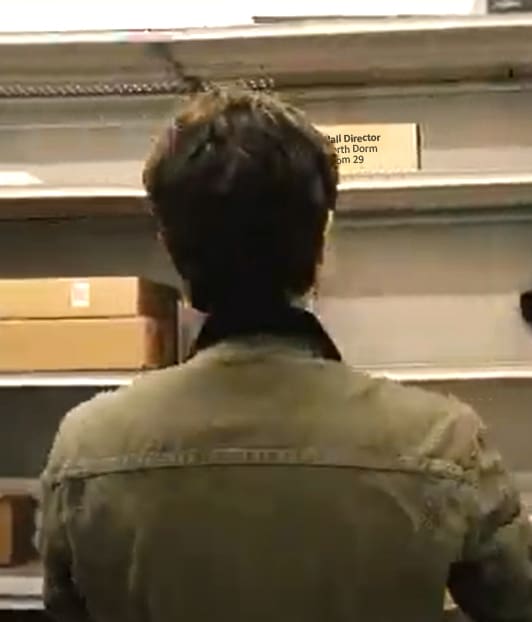Originally Posted at VMblog
Mutations of the COVID virus coupled with office workers who continue working from home will test the limits of e-commerce fulfillment even further in 2022. Prior to the pandemic and the universal acceptance of working remotely, managers and staff at multi-family dwellings were already struggling to protect and process the incoming packages for residents. Backrooms, even closet spaces were made into ad hoc holding areas while management waited for residents to inquire about deliveries. Over the last year and a half, e-commerce purchases have dramatically increased to a breaking point at these multi-family dwellings. Already strained to process this kind of package volume, buildings can no longer process and secure the sheer volume of items hitting the lobby on a daily basis.
Managers attempted to streamline package management by embracing lockers to hold the incoming items. However, this soon proved to be ineffective because many packages did not fit into the lockers, causing property managers to revert to self-storage and manual resident notifications. The more effective solution became the smart room, where couriers access secure rooms, scan packages, and place them on open shelves where computer vision keeps an eye on them. Automatic text or email notifications are sent to residents allowing them to use a QR code to enter the room where audio prompts and lights guide them to their exact package location or notify them if the wrong package is taken, all without staff.
Due to the improved security, significantly decreased staff intervention, and simple 24/7 resident retrieval process, these smart rooms realized a dramatic increase in multi-family housing deployments. We predict that this trend will continue throughout 2022 to the extent that this type of package management solution will become an apartment amenity in the same manner as residents expect to have internet, WiFi, and cable TV.
A Retail Renaissance
Retail stores struggling with a lack of employees will turn to Artificial Intelligence (AI) and transform the once bane of their existence-product returns-into a new competitive differentiator. 2022 will find that store return experiences are more streamlined and, through the use of AI, actually offer intuitive sales options not available at the initial time of purchase.
The pandemic forced a contactless shopping experience in 2020 and Buy Online Pickup In Store (BOPIS) solutions were embraced by most retail locations. 2022 will expand upon BOPIS experiences to also include returning merchandise-with a twist. Leveraging smart shelving, merchants will allow customers to scan the tags or receipts of items to be returned and simply place them on the shelf where the computer vision will monitor the returned product status. Once scanned, the AI will go to work reviewing the customer’s past purchases and instantly suggest other items based on the shopper’s profile. The intuitive system will also administer coupons for similar products, enticing the customer to enter the store for possible new purchases.
The 2022 byproduct of all this automation is that retailers will be better equipped to stay in tune with fluctuating consumer preferences. Even at the moment of return, retailers will be able to use AI to automatically cross-sell products that are appropriate to that individual shopper. With these future features, retail stores will be able to efficiently transform returns into a new shopping experience and profit center.
In addition to contactless requirements, another challenge that has emerged from the pandemic is a labor shortage in the retail market. The shortage is partly due to the labor force’s changing preferences about their work environments and partly because of the types of work they are now interested in pursuing. This shortage, in addition to the slowing brick and mortar sales, has forced retailers to do more with less and find other methods to improve their bottom line. Less staff doing more for sales means they can raise salaries or increase benefits to attract skilled labor focused on customers, not fulfillment. In 2022, retailers will stop having employees do “dumb jobs” by leveraging more smart technologies such as AI to manage the mundane tasks that don’t add to the bottom line and that employees don’t want to do anyway. By managing the dumb jobs with technology, they will optimize store operations while simultaneously requiring less human interaction. Less human interaction can reduce the employee headcount (giving employers the option of increasing the salaries) or enable stores to focus staff on selling, not on something that doesn’t add to the store’s profitability. Necessity is the mother of invention and retail locations will discover more automated and AI processes that will enable them to fill the employment gap with technology while strengthening the workforce and improving their customers’ shopping experience.
##
ABOUT THE AUTHOR

Ned Hill is the founder and CEO of Position Imaging (PI), a pioneer in the field of advanced tracking technologies. Under Ned’s strategic vision and guidance, PI has developed an industry leading tracking solution, utilized computer vision and laser guidance to simplify item delivery, and created unique AI-based technologies. These combine to improve logistics efficiency and continuous visibility to items at any stage in the process. Ned has raised close to 20 million in funding, driven product development, and created a partner ecosystem of industry leaders in hardware (Hitachi-LG Data Storage, Intel), software (Microsoft, Salesforce), solutions (Zebra, Lozier), and service (Bell and Howell). Ned is the inventor or co-inventor of over 50 patents/patent applications and a speaker at industry conferences including CES, Live Free and Start, and at MIT.

